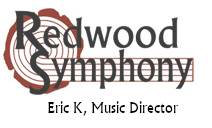Gioacchino Rossini
William Tell Overture
By the age of 37, Gioacchino Rossini was possibly the most revered and certainly the most successful operatic composer of his day. He had written 38 operas since the tender age of 18, 28 of them in an incredibly prolific period of eight years, from 1812 to 1819. The French government brought him to Paris in 1824, where he was contracted to compose for the Théâtre Italien and the Opéra. It was for the latter that he wrote his final opera, Guillaume Tell, in 1829.
Based on a work by Schiller, the opera recounts the tale of the legendary Swiss hero, William Tell, during the time of the Swiss fight for independence from the Austrian Hapsburgs in the 14th century. Tell, a noted marksman with the crossbow, refuses to bow to a hat set up on a pole by the Austrian governor, Gessler. Gessler arrests him and says Tell will be freed if he can shoot an apple off of his son’s head. Tell does so, but says if he had failed he would have shot Gessler and is chained again. Eventually Tell is freed long enough to kill Gessler, leading to a revolt by the Swiss.
After writing Tell, Rossini retired from composing operas. He was tired and at this time chronically ill; but though he eventually regained his health and continued to write piano works (such as the Péchés de vieillesse, or Sins of Old Age, 1857–1868) and sacred pieces (Stabat Mater, 1841), he had ended his theatrical career for good. Newly married to his second wife, he moved to Paris in 1855 and spent the rest of his days as a well-known gourmand, writing, “As far as I’m concerned, I know no more wonderful occupation than food.”
The full opera, Guillaume Tell, is such a spectacle that it requires six hours to perform. The work combines Italian lyricism with the declamatory style, huge choral ensembles, and theatrical flourishes (ballets, processions) common to French opera. Yet though Tell appears to have been received positively at its premiere on August 3, 1829, it was quickly felt the work was too long, and the opera was soon being cut and cut again. Some companies performed only a semi-staging of the second act. An oft-told tale (though unverified) describes the head of the Opéra telling Rossini that “tonight we are performing the second act of your Tell,” to which the composer replies: “Indeed! All of it?”
Not only was the opera Rossini’s longest, its overture was his longest and most elaborate as well. Its musical imagery is seen by many as a precursor to the tone poem. Indeed, its depictions of a storm, a pastoral scene, and heroic riders are now the definitive musical metaphors for each of these images — as anyone who grew up watching American cartoons can tell you!
The cellos and string basses open the work, heralding the dawn. This section, though peaceful, is actually a virtuosic segment for the low strings: Rossini divides the passage into eight separate parts. Some “raindrops” from the woodwinds and swirling “wind” from the strings segue into a violent storm, with brass blaring and drums rolling. In the calm following, an English horn and flute sound the familiar tune now associated with quiet, bucolic scenes. Rossini based this melody on the Swiss ranz des vaches, a tune played on the Alpine horn by cowherds to call in their cattle. Finally, a trumpet sounds the four notes known throughout the world as the opening of the theme for the Lone Ranger, though Rossini meant to signify the approaching Swiss army. The rousing rhythm is that of a popular dance called the galop — and what better dance to conjure up an image of galloping horses, whether of Guillaume Tell’s Swiss Army or of the Lone Ranger’s white steed? Hi ho, Silver, indeed!
October, 2002
